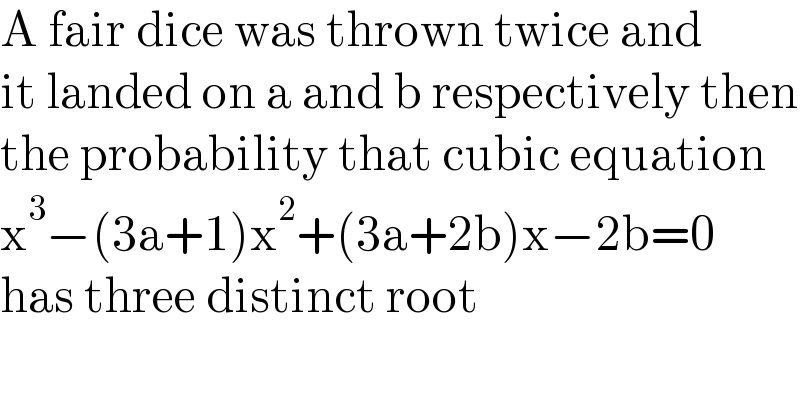
Question and Answers Forum
Previous in Probability and Statistics Next in Probability and Statistics
Question Number 176449 by peter frank last updated on 19/Sep/22

| ||
Question and Answers Forum | ||
Previous in Probability and Statistics Next in Probability and Statistics | ||
Question Number 176449 by peter frank last updated on 19/Sep/22 | ||
 | ||